In 1994, Skoda Auto introduced the Felicia adapted from the older Favorit. The platform was the last one that Skoda had developed on its own as, by that time, the Czech automaker had been acquired by the Volkswagen Group.
The Felicia did reasonably well as a B-segment contender, benefitting from support from Volkswagen in design and powertrain technology. Later in the decade, it even helped Skoda get a ‘Best Manufacturer’ title (for customer satisfaction) from JD Power’s survey. Some 1.4 million cars were sold over a 7-year run and it was also produced in China for a while.
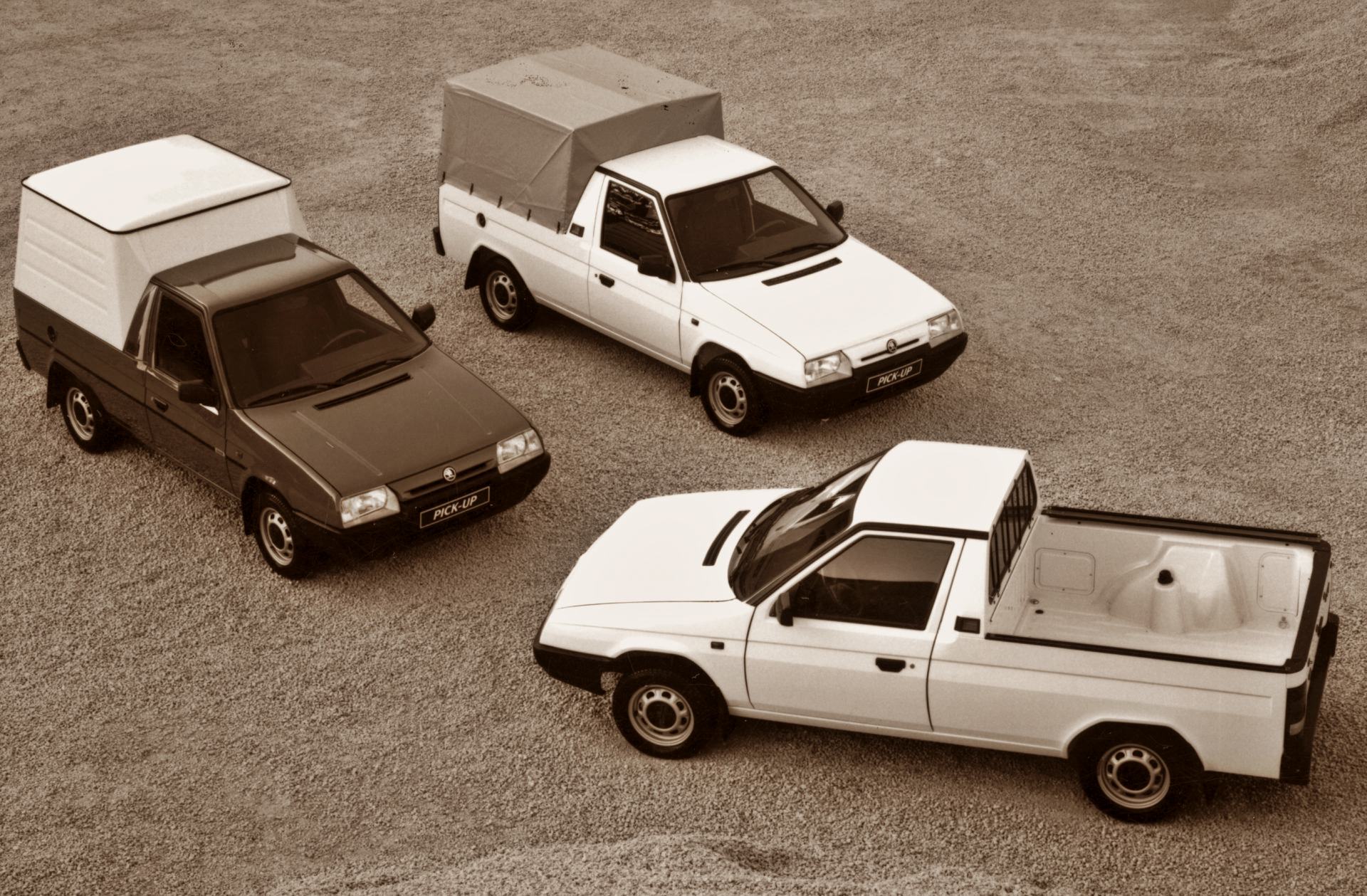
Coupe utility pick-up
During that 7-year run, a pick-up variant was also offered from 1995. It wasn’t the brand’s first pick-up truck as there had also been a Favorit pick-up earlier. But the Felicia pick-up had a more modern and sporty appearance that they even described it as a ‘coupe utility pick-up’.
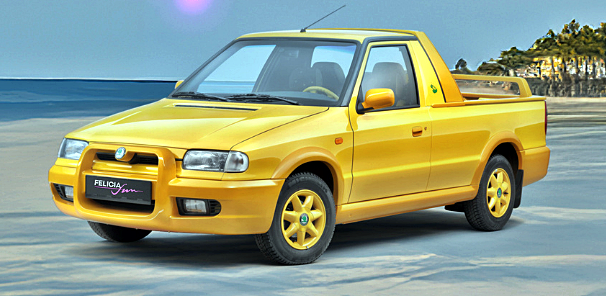
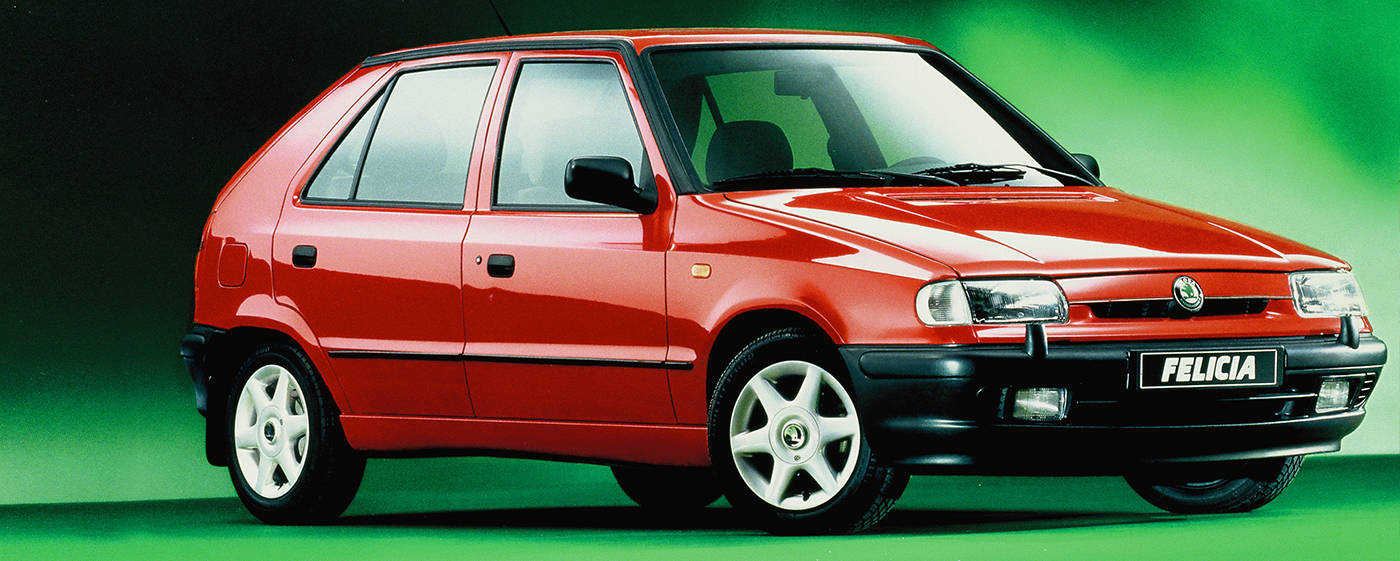
The sportiness of the Felicia pickup led Skoda designers to come up with a special version that was known as the Felicia Fun in 1997. With its bold, bright colours, unique sliding rear partition and pop-up seats on the cargo deck, its image lived up to the ‘fun’ in its name.
A rare Skoda
Skoda produced 4,216 units of the Felicia Fun between 1997 and 2000 (Felicia production ended in 2001), and apart from being a cult car, it is also one of Skoda’s rarest production models (only 80 are known to be registered in the UK).
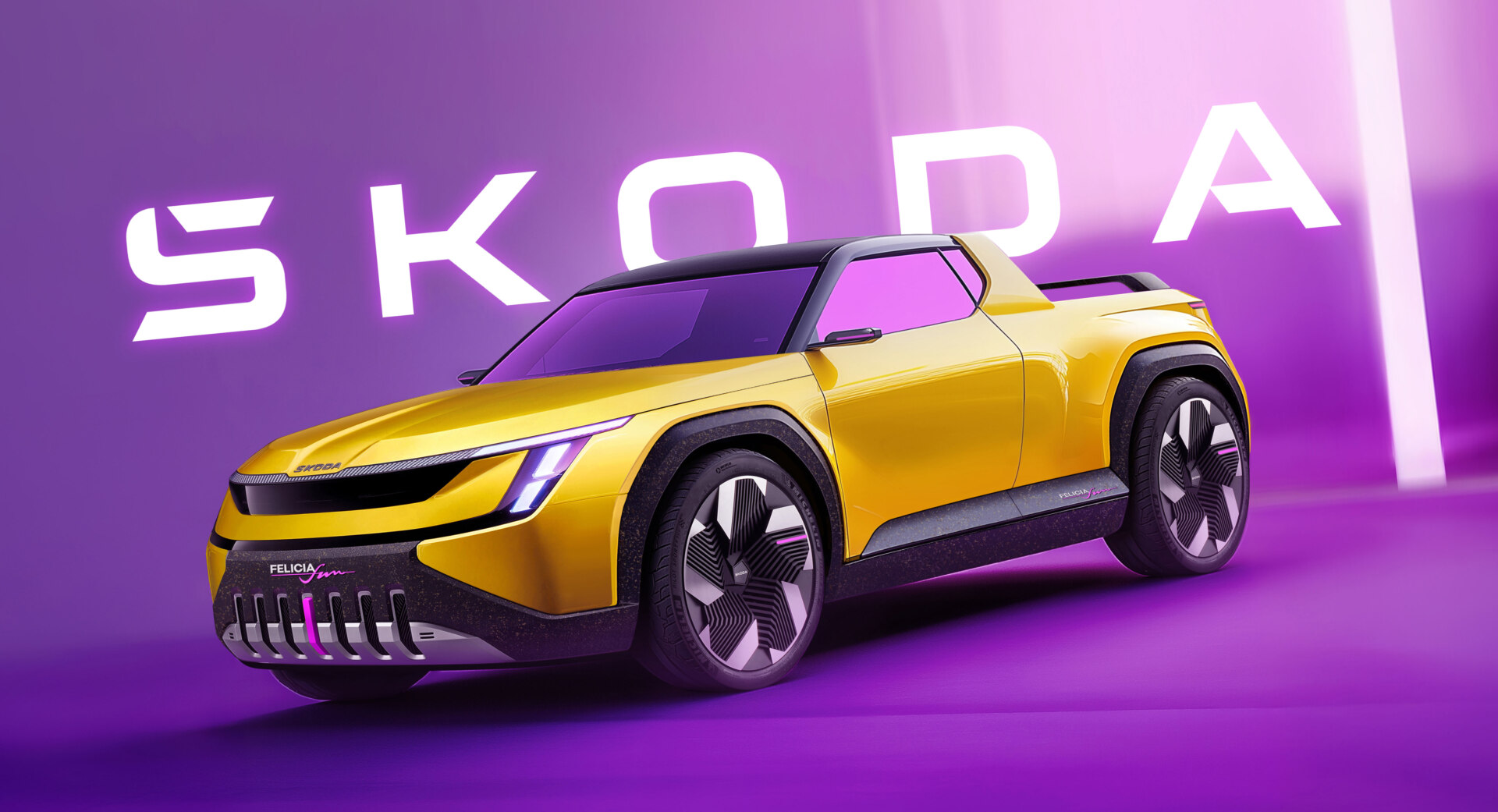
Modern Solid Design language
Skoda has now unveiled a reimagined modern version of the Felicia Fun pick-up as a design study. Conceived by French stylist Julien Petitseigneur, it embodies the spirit of the late 1990s cult model while incorporating the brand’s Modern Solid design language.
Skoda’s Modern Solid design philosophy, first showcased on the 2022 Vision 7S concept and a defining element of the new Elroq and Enyaq models, gives clean surfaces and bold proportions that reflect the brand’s new direction. For the design study, subtle retro touches preserve the carefree character of the original.
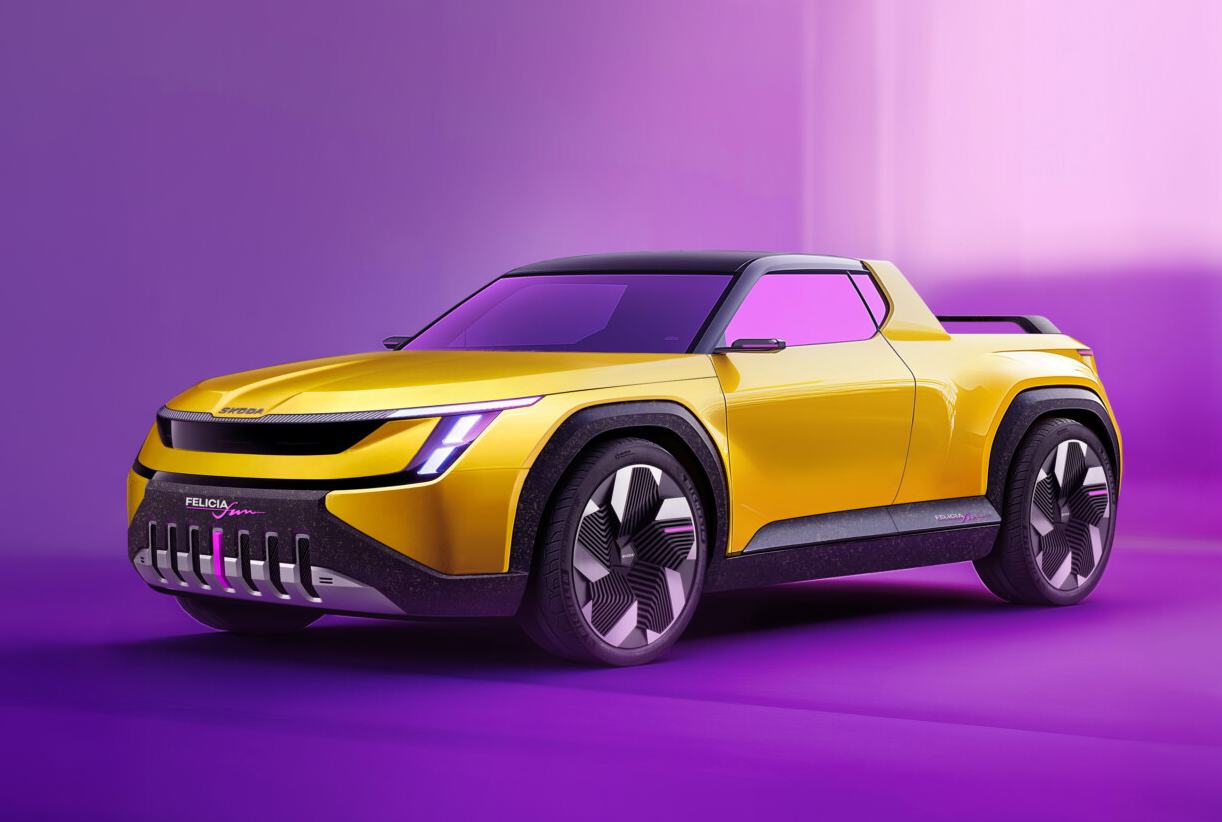
At the front, the study features the Tech-Deck Face grille flanked by slim, T-shaped LED headlights – a signature Modern Solid element. The wide stance and aerodynamic wheels are offset by chunky black bumpers, sills, and wheel arch cladding, all contrasting with the yellow bodywork which was also used for the original model.

While the rear retains the full-width spoiler of the original, the trim strip in the tailgate has been replaced by a light bar that emits pink rather than red light. Petitseigneur also chose neon pink for wheel highlights and glass tints to further reinforce the car’s playful, beachside feel.
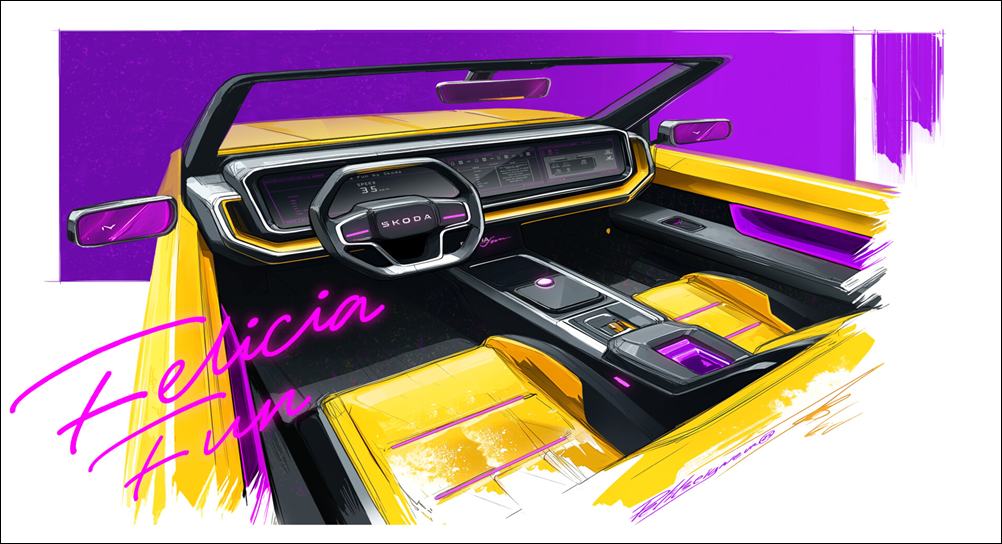
Inside, the reimagined Felicia Fun continues the retro theme. A full-width dashboard screen features old-school videogame-style graphics, with the screens designed in such a way that they look like a modern reinterpretation of the chunky CRT monitors familiar from the original car’s era.
Designer’s inspiration
Explaining what inspired him to create a rebooted version of the original, he said: “The original car was pure fun – it didn’t take itself too seriously, and it stood out in a way that few other Skodas ever have. For me, it was the obvious choice to reimagine in my spare time. I even found myself looking at buying an original while working on the sketches.”

“The Felicia Fun was unusual, but its design was relatively simple, which made adapting it to Modern Solid surprisingly straightforward. It had clean shapes and very little ornamentation, so updating it was more about proportions and details than reinventing it entirely,” he added.
Skoda Vocational School students impress again with Rodiaq camper van proposal



